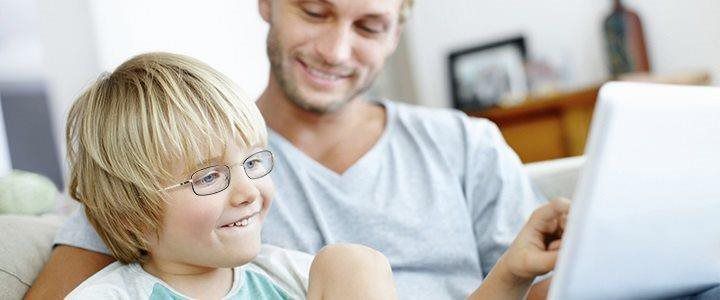
(BPT) – A generation ago, limiting a child’s screen time meant putting restrictions on how much television they could watch in a single day. “No more than two hours a day and don’t sit too close to the screen.” Those were the rules, and while enforcing them was a challenge, it was easy to remember.
Times have changed.
These days, the challenge parents face regarding their children’s screen time has grown exponentially and protecting their eyes from too much blue light exposure is more important than ever.
Last fall, the American Academy of Pediatrics (AAP) hosted a national conference involving more than 10,000 pediatricians. The focal point of discussion was children and screen time. Concerned about the effects of screen time — and blue light — on young children’s eyes, the AAP officially recommends:
* no screen time for children 18 months and under.
* one hour per day for children ages 2-5.
* limited screen time for children ages 6 and above.
Prolonged exposure to blue light (the blueish glow emitted from digital device screens), has been shown to cause headaches, dry eyes and even hamper sleep, so it’s no surprise the AAP would recommend limits for children. Monitoring your child’s overall screen time can be easier said than done, so don’t try to go it alone. For parents, however, there are things you can do besides simply monitoring your child’s time in front of their favorite device:
* Plan for breaks. Consider recording shows and then allowing your children to watch them with the expectation that their session will end at the show’s completion rather than continue on into the next program. If computer/smartphone use is the problem, consider using parental controls within the device settings to limit usage. If that’s not an option, you can install apps that set off an alarm at pre-timed intervals to inform your little one it’s time to do something else.
* Discuss your child’s screen time with your eye doctor. Just as you would consult the pediatrician for a question regarding your child’s general health, your optometrist is there to answer any questions you have about your child’s eyes. If a trip to the optometrist isn’t covered under your current insurance plan, VSP Individual Vision Plans, a national family and individual vision insurance provider, can help. VSPDirect.com offers affordable access to high-quality eye care and eye wear, and people who use individual or family vision plans typically save hundreds of dollars on their eye exams and glasses.
* Be aware of when they use devices. In some cases the amount of screen time a child has isn’t as important as when they have it. Research shows that blue light exposure shortly before bed delays REM sleep, leading to poorer sleeping habits. Eliminate screen time a couple of hours before your child goes to bed and they’ll wake up more rested.
* Adjust device settings. Some easy settings you can adjust to make your child’s screen more readable are increasing the font size, reducing the screen brightness or increasing the contrast of the screen. And the easier it is for children to use the device, the less they’ll feel they have to get their nose right against the screen.
* Be the alternative. The easiest way to protect your children from the risks of digital eye strain is to give them something to do that takes them away from the device altogether. Engage them in a board game, a trip to the park or a visit to the mall. Just make sure you do it together and device free — for both of you — and you’ll have a great time in a way that’s healthy for the entire body.






